When was the last time a new model from Toyota created so much hype? Sure, car guys like the Toyota 86 and many within the same group are eagerly anticipating the new Supra, but if you haven’t already realised, there’s a real world out there with actual car buyers. And normal people really like SUVs.
But in a landscape already saturated with SUVs, how does a latecomer stand out? Go for broke, design-wise – that’s what Toyota did with the C-HR.
UMW Toyota Motor’s long tease of a nationwide pre-launch campaign drew massive interest from Malaysians, who flocked to showrooms and roadshows for a closer look at the Coupe High Rider (Compact High Rider and Cross Hatch Runabout are the alternate names, but I like coupes and we’ll stick to that). Local previews started in May 2017, culminating in a key handover ceremony last month, but appetite has been building since the C-HR’s debut in March 2016. Let’s not forget that a car-based Toyota SUV in our market is already a novelty in itself.
The bubble deflated somewhat when UMWT announced Malaysian pricing and specs. At RM145,500 for the single spec 1.8L, the C-HR is priced RM28,000 higher the highest spec HR-V 1.8L, and RM14,000 more than the 2.0L Mazda CX-3. The substantial price difference between the C-HR and the incumbent Honda can be explained by the CBU Thailand vs CKD factor, and the fact that the C-HR is a costlier product for the first buyer, which is UMWT. From what we hear, they’ve tried their best.
Honda salesmen must have let out a collective sigh of relief. At RM145k, a C-HR buyer can opt for a seven-seat Nissan X-Trail and still have change for a family holiday; while the starting price of the new Mazda CX-5, which is also a larger car, is RM10,000 less.
Priced as such, there’s little chance for the funky Toyota to top the sales charts, but failing as a value proposition says nothing about a car’s abilities and appeal. There’s plenty to like, as we found out over a weekend.
Now that we’ve got the elephant named ‘Value’ out of the room, let’s talk car. The Toyota C-HR isn’t the straightforward competitor to the Honda HR-V (and by extension, the Mazda CX-3) as most think. B-segment SUVs are based on B-segment hatchbacks, that’s the convention – the HR-V shares underpinnings with the Jazz, the CX-3 with the Mazda 2, the Renault Captur with the Clio; you get the drift.
The C-HR is different. This global model has no bones in common with the B-segment Vios and Yaris that we’re familiar with, but uses the modular Toyota New Global Architecture (TNGA) platform that also underpins the latest-generation Prius and the just-unveiled Corolla Hatchback, which is the third-generation Auris in Europe. These are fresh C-segment vehicles, and as we know, the higher up the car chain, the more sophisticated the underpinnings are.
Chief engineer Hiroyuki Koba revealed in 2016 that they started working on the project six years ago, and the original plan was to build the C-HR on an existing small car platform. Midway through the project, TNGA became available and they went for the best option.
It may have been the best, technically, but the decision would also improve TNGA’s economies of scale. The C-HR is the second model to use the TNGA C-platform after the Prius (a D-segment version underpins the new Camry and US-market Avalon) and the first ‘regular’ car to do so after the dedicated hybrid. It won’t be inaccurate to call the C-HR a “compact C-segment SUV” then.
The dimensions correspond with its larger frame. At 4,360 mm long and 1,795 mm wide, the C-HR is 66 mm longer and 23 mm wider than the HR-V. Against the CX-3, the footprint advantage grows to +85 mm and +30 mm. The Toyota’s 2,640 mm wheelbase is 30 mm longer than the Honda’s and 70 mm longer than the Mazda’s. It’s a heavier car too, tipping the scales at 1,405 kg, 138 kg more than the HR-V and 194 kg more than the CX-3.
The Toyota’s larger footprint is apparent when you see it in the metal. The width is made more apparent by a sweeping roofline that at its highest point, is 40 mm lower than the HR-V’s. The athletic stance is coupled to a muscular body that’s sculptured like no other compact SUV – those swollen wheel-arches are accentuated by deep creases that form a clear ‘V’ on the profile. Nice ab definition.
The sloping roofline and hidden rear door handles are highlighted by our test car’s black roof (only available with Blue Metallic and Red Mica), which gets the now ubiquitous ‘floating’ effect that’s rather well-executed here, I think. As far as translations from concept to production go, the C-HR retains the essence of the eponymous concept car that was first shown at Paris 2014 and updated for Frankfurt 2015.
Coupe enough? Although its short front doors give away the game, it’s a yes from me. It’s always good to have reference points, and we brought along two genuine two-door Toyotas for you to compare angles. So, what do you think?
My favourite view of the C-HR is the rear three quarters, where the crossover’s twin spoilers (an elaborate cantilevered wing on top and a slim lip bridging the lights further down) and boomerang tail lamps decorate a backside that’s very ‘3D’. There’s plenty going on, and this writer is usually the first to dismiss overwrought designs and busy backsides, but this one works for me, somehow. You’ll either find the C-HR’s looks fascinating or revolting – there’s no sitting on the fence with this one.
Toyota says that the C-HR’s design theme is “Distinctive Diamond” and that the silhouette resembles a diamond set on its side. If you, like me, have yet to spot the precious stone, step inside the C-HR to see the sparkle. One will find geometric shapes on the perforated leather seats, door inserts, button clusters, speaker grilles and even the roof-lining. It’s immediately clear that the bold exterior styling has its match with this cabin.
The C-HR’s dashboard is slim and sweeping, a complicated affair that somehow manages to look minimalist. There are many layers, but the centre stack only has one control panel for the air con, apart from the freestanding touchscreen head unit. The high centre console is similarly sparse, housing just the gear lever, electronic parking brake, two small buttons and two (very deep) cupholders.
Personally, I’m not a big fan of protruding touchscreens, but accept that they’re unavoidable these days. The one here is even more prominent because it’s asymmetrical, with one side of the bezel housing a digital clock (so Toyota!) and some warning lights. Here’s an exercise: mentally block out the protrusion and see how sleek and sportscar-like the dashboard would have been. Good thing then that the twin barrel dials – which sandwich a colour 4.2-inch multi-info display – are as classic as they come.
Much of the above points are also true of the HR-V’s pleasant cabin – coupe-feel, slim dash, pared-down look – but the C-HR’s cockpit design is more edgy, more controversial, and ultimately more special – if you like it in the first place. Toyota has a big parts bin, but much of what we see here is unique to the model, underlining this project’s dedication to design.
Trim wise, the stitched dash topper in brown provides a dash of premium, and much needed contrast to a dark cabin. The chocolate tone is repeated on the door cards and centre armrest, and it plays off sparkly piano black trim that covers the entire centre console and features prominently on the dashboard. The occupant-facing plastics are soft and the door armrests are squishy. Plastics are harder as you look lower, but that’s expected at this price point.
The materials are good, but the fit and finish is impressive, considering the number of pieces on this elaborate design. The steering audio buttons don’t click with much authority though – tactile feedback is feeble. In contrast, the satin feel of the gear knob is really nice, and I found myself subconsciously caressing it rather often.
With its focus on design and sportiness, something would have to give, and as you’d expect, the C-HR isn’t the most practical or family-friendly compact SUV in town. Access to the rear seats isn’t the most straightforward with the disguised door handles, which open upward. The HR-V plays the same trick, but the Honda’s handles are placed lower and open forward. Once opened, the aperture isn’t the largest, either.
However, once inside, rear seat space is actually decent. With the driver’s seat set in this 173 cm writer’s position, there’s good leg and knee room available, and headroom does not seem to be overly compromised by the roofline as feared. There’s also ample space under the front seats (at their lowest position) for feet to tuck in.
While space isn’t an issue, rear occupants won’t be enjoying the journey much if they’re not the sleep anywhere kind. Directly next to the head is door trim, not glass. As the small rear window is located further forward, one will have to perch forward for a view out. Coupled with the all-black cabin theme and large front seats, the C-HR’s rear quarters is claustrophobic. Still, we’ll rather be in here than in the cramped CX-3.
Similarly, the Toyota is also nowhere near as cargo friendly as the HR-V and its multi-folding Ultra Seats. The C-HR’s rear bench can fold flat 60:40, but that’s about it. The boot is beaten on space and squareness by the Honda (388L vs 437L), and I found the hatch to be rather heavy.
On the move, forward visibility is good, but off the shoulder rear vision is not, blocked by the thick C-pillar and small rear window combo that’s crucial to the good looks. Reversing out of a perpendicular parking spot is a guessing game, more so than in my Honda CR-Z. It’s just as well that the C-HR comes with a reverse camera and Rear Cross Traffic Alert (RCTA); the latter isn’t a bonus but a necessity here. Fashion comes at a price – coupe, remember?
In Malaysia, the C-HR is powered by a 1.8 litre four-cylinder engine with 140 PS and 171 Nm of torque at 4,000 rpm. Power from the naturally aspirated 2ZR-FBE Dual VVT-i unit goes to the front wheels via a CVT automatic with seven-speed “Sequential Shiftmatic” manual mode. Not available here are the efficiency-focused 1.2 litre turbo and a 1.8 litre hybrid.
The 1.8L CVT combo has decent zip around town, and impeccable manners. Drivetrain refinement is good and the engine does its thing unnoticed most of the time. The CVT performs well, revs falling almost immediately once you ease off the gas to mimic an upshift, albeit a soft one. Much of my urban driving is done in the 80-90 km/h range, which equates to a barely awake 1,500 rpm here. Progress is smooth and serene, with the proviso that you don’t treat the accelerator like a light switch.
Much-maligned by car enthusiasts, the stepless transmission has improved massively over the past few generations of Japanese cars and is a far cry from the noisy early examples embedded in our heads. In fact, based on this latest sampling, I might actually prefer one over a regular torque converter auto in a daily urban driver.
The low NVH is allied with good ride comfort. The C-HR absorbs everything our construction ravaged roads can throw at it with dismissive ease. High speed primary ride is very composed, too.
However, roar from the Dunlop Enasave tyres (215/60 R17) can get pretty loud on certain surfaces, occasionally breaking through the otherwise impressive insulation. Nothing a good set of touring rubber can’t fix, though.
Also, going over humps at moderate speeds (that a CR-Z can skip over without issue) would also cause a heaving sound from the boot area – I’d like to be able to take more liberties in an SUV. These two small gripes don’t detract from the fact that I found the C-HR to be a great daily driver.
Up the pace and the C-HR’s case doesn’t crumble. Instead, it gets better. Push it harder and the earlier signs that the C-HR is well-judged dynamically becomes clear. The steering has good weight and feels natural, not artificially quick or cloying, as can be the case when carmakers want to emphasise “sporty”. It corners flat, and the touted lowest-in-class centre of gravity translates to a sense of light-footedness that I didn’t expect. The composed ride and gently supportive seat also helps one focus on the job in hand.
The town-friendly CVT holds on to revs longer in Sport mode, which is something i don’t normally use these days. But flipping the gear lever to the right revealed a rather convincing manual mode for a CVT. The shifts feel legitimate and you get a big sensation as you row through the “gears”. Good response in DIY mode aside, the ability to fully wring out the engine adds a layer of drivability not found in the HR-V. Despite not having paddle shifters, I used manual mode throughout the backroad blast, which says something.
Think of the squeal from the non-sporting tyres as a natural reminder to calm down, because the C-HR is a fun to drive car on B-roads. It’s not the fastest, of course, but there’s an inherent rightness about how it all comes together dynamically – despite the format, despite the CVT. One complaint though: the only way to change Drive Modes is to dive into the MID menu, and that’s a lot less efficient than thumbing a physical button.
How does it compare with the HR-V and CX-3 on the move? The latter, like most modern Mazdas, serves up plenty of sensation at the expense of refinement. Some may like it that way, but the C-HR does fun while being a matured daily driver. The Honda meanwhile is comfortable and dynamically competent without ever raising your pulse rate.
As you would have gathered by now, I really fancy the C-HR. It performs well when you’re in the mood, and more importantly – because this might be 95% of the time – when you’re just ambling along. That’s impressive, but the main draw is the crossover’s wild but captivating looks. You’d expect Toyota to come up with a safe, uncontroversial ‘me too’ SUV; instead the C-HR sacrifices rear comfort and boot space for coupe looks and double wishbone rear suspension. This no compromise approach makes the C-HR a special car in a humdrum segment.
We reckon that the C-HR would have been an easy pick for many were it not for a price tag closer to the CR-V than the HR-V. Seven airbags, blind spot monitor, RCTA, tyre pressure monitoring system, LED daytime running lights, auto lights/wipers, dual-zone auto air con, keyless entry and push start, leather seats (manual, but powered lumbar for driver), anti-dazzle rear view mirror and a seven-inch touchscreen head unit are what you get for RM145,500.
While not bad, the list omits some highly visible items that the layman can pick on – halogen headlamps, the lack of rear LED signatures and plain/small-looking rims are some. IMHO, the class-above platform and double wishbone rear suspension are more valuable, but their benefits aren’t as easily seen as LED lights.
Those looking for value won’t go wrong with the Honda HR-V, which has become the default SUV in our market, and rightly so. Those buying the C-HR will do so because they desire one for how it looks, because they want to be different, and because they can afford it. Desire – it’s why people pay good money for the Range Rover Evoque, MINI and special Toyotas.
Looking to sell your car? Sell it with Carro.

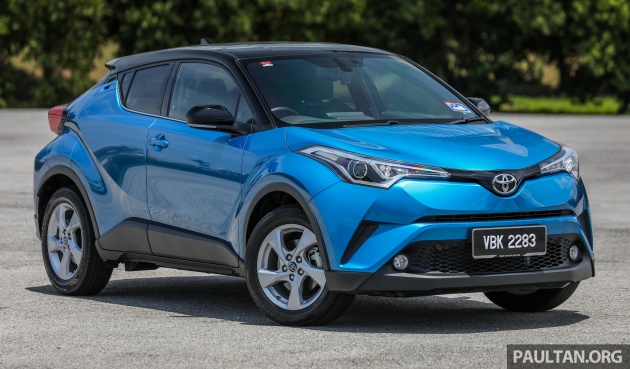
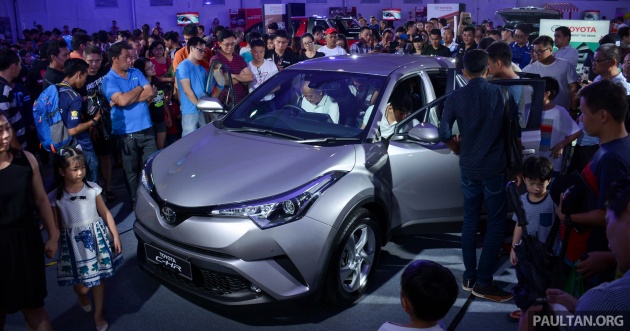


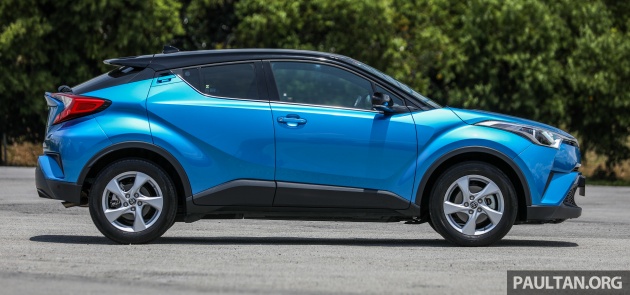
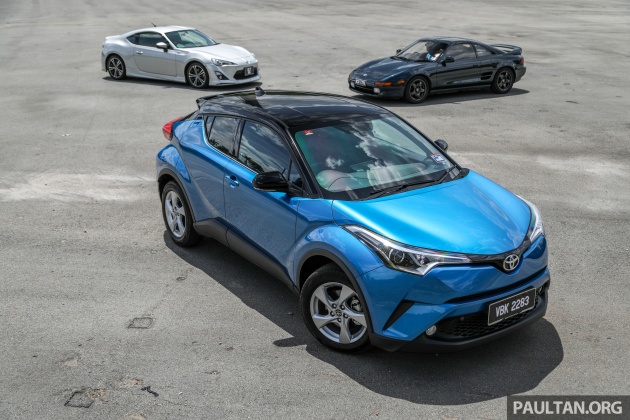
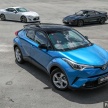



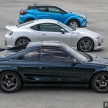
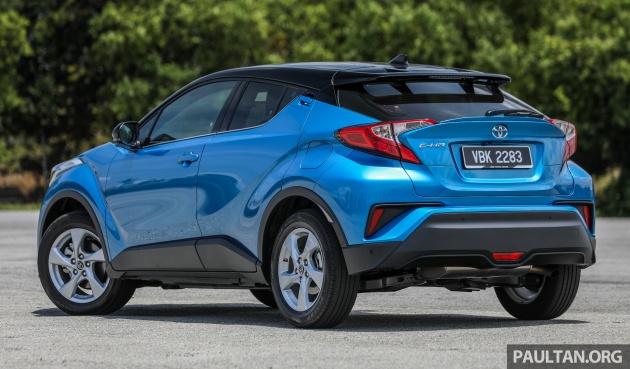
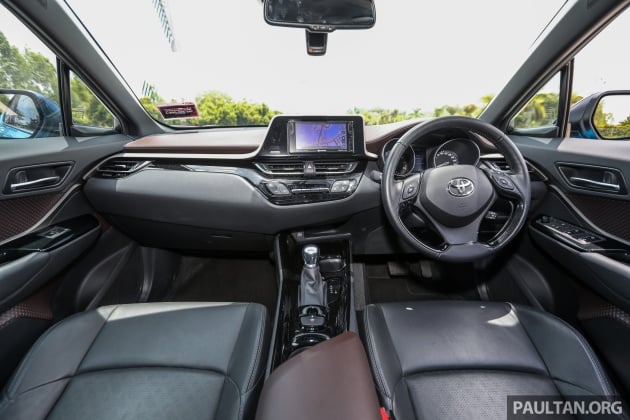












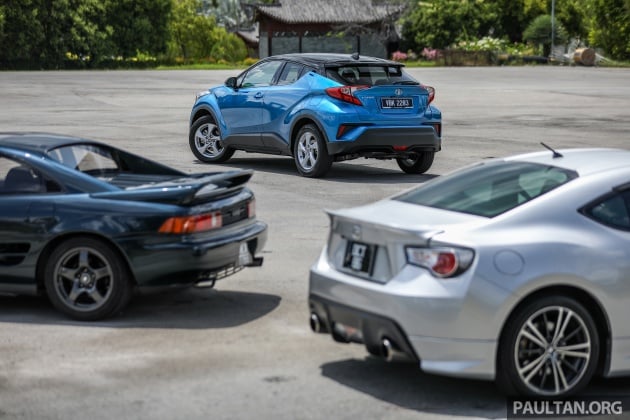
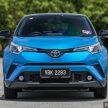
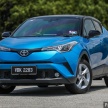
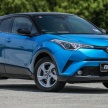
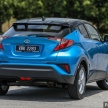
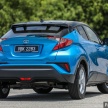
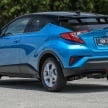
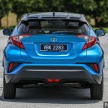
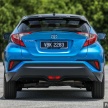
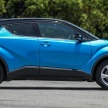
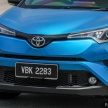
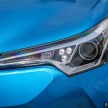
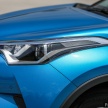
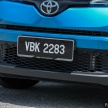
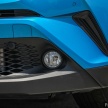
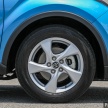
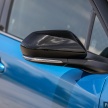

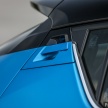
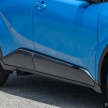

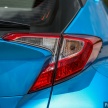
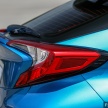
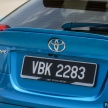
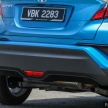

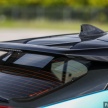
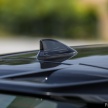

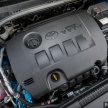
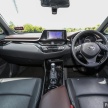
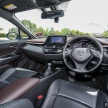
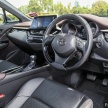
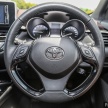
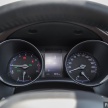
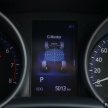
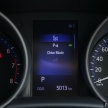
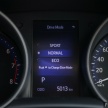
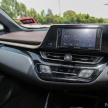
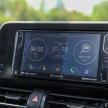
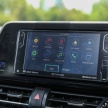
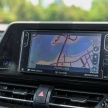
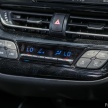
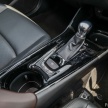
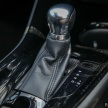
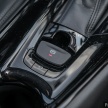
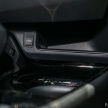
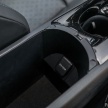
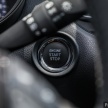
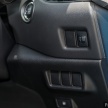
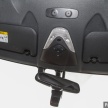
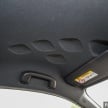
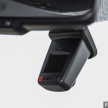
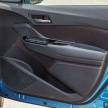
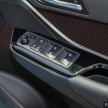
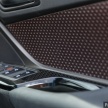
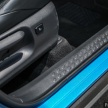
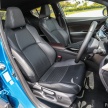

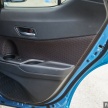
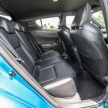
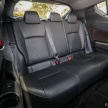
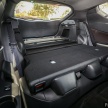
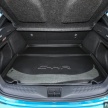
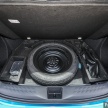
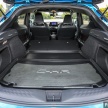

























AI-generated Summary ✨
The comments reflect mixed opinions on the Toyota C-HR 1.8L, with many feeling the price is overly high and comparing it unfavorably to other SUVs like the Honda HR-V, CX-5, and CR-V, citing better value, space, and features elsewhere. Some commenters appreciate its unique design and exterior styling, calling it standout or attractive, but others find it ugly or immature-looking. Emotions are strong, with some buyers expressing passion and attachment, while many criticize the cost, features, and practicality, especially with its limited rear doors and interior quality. There's also discussion about pricing differences across regions, hybrid options, and overall excitement versus skepticism about its logic and value proposition. Overall, sentiments are polarized, with a tendency toward skepticism about the price and practicality, but some genuine admiration for the design.